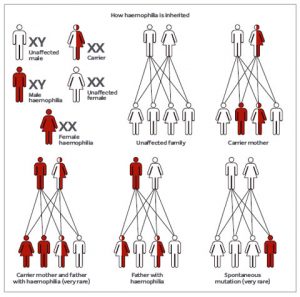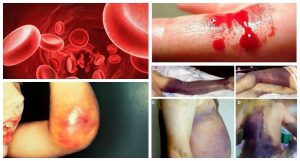What is Haemophilia?
What is Haemophilia?
Haemophilia was the first bleeding disorder to be identified and it is also the most famous.
A lot of people know that Queen Victoria carried the gene for Haemophilia and that Alexei Nikolaevich, Tsarevich of Russia, famously had the condition.
As the video (above) explains it has usually been seen as a condition that affects men.
However, these days it is widely recognised that many women who carry the affected gene have low clotting factor levels and can experience bleeding issues. So, women can have Haemophilia too.
There are three main types of Haemophilia. If you have Haemophilia A then you aren’t producing enough Factor VIII. In Haemophilia B it is Factor FIX which is the problem. People who don’t have enough Factor XI are sometime described as having Haemophilia C as well.
In this section
Haemophilia A
Haemophilia B
Inheriting Haemophilia
NB Haemophilia C will be added soon.
Visualising the coagulation process and hemophilia, a unique and valuable educational tool for patients and health care professionals
Being able to visualize the coagulation process helps both physicians and health care professionals to explain the pathophysiology of haemophilia and patients to understand their disease and its treatment. Right from the discovery of the role of the different clotting factors, man has always tried to schematize and visualize the complex coagulation process. We added an extra dimension by using the most recent imaging technology.
Together with a specialized production house we developed a set of video animations, explaining the coagulation process in a normal situation and in a hemophiliac patient without and after factor replacement. Following this stepwise approach, in about 14 minutes spectators get a better understanding of the coagulation process, the role of both factor VIII and Factor IX, the mechanisms of haemophilia and its consequences as well as the need of replacement therapy with clotting factor concentrate.
This movie provides a unique and valuable educational tool for instructing patients and relatives, and leveraging their compliance. This animation should also contribute to improve the awareness and understanding of haemophilia among health professionals.
Click on the links to read more:
What is Haemophilia
haemophilia_infographic
08_aquired_haem
hmf70101
guidelines_mng
Click on the links to see more:








